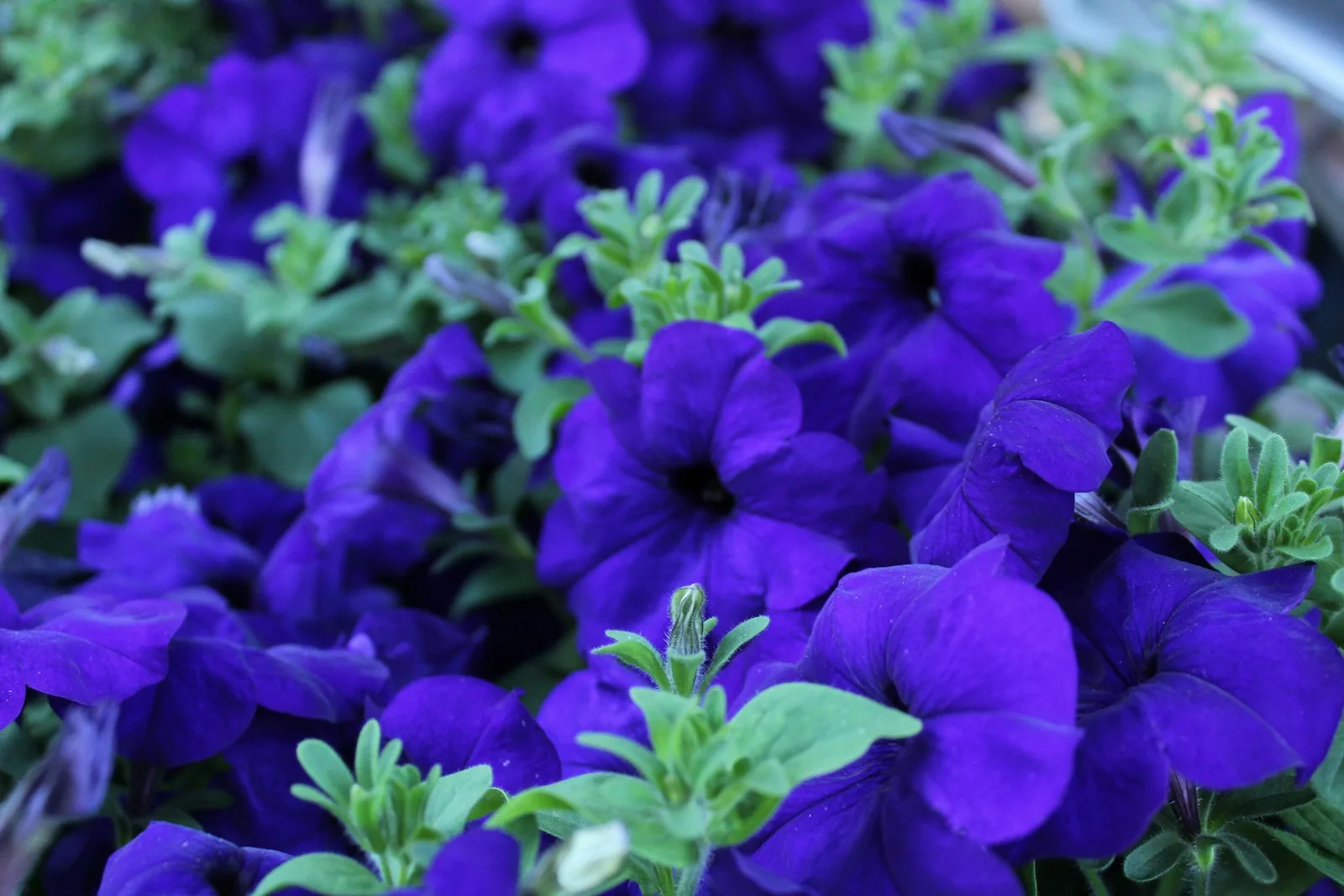
Table of Contents
For those who enjoy gardening, petunias are popular annuals because they are affordable at garden stores, easy to grow, and, with proper care, bloom from spring to fall. These stunning trumpet-shaped blossoms come in colors that complement any color scheme and are available in white, pink, red, purple and even black. More gorgeous new varieties exist, such as Night Sky, which features polka-dot-speckled vivid purple flowers. Petunias are low-maintenance plants that grow well in the ground and in containers. But, some serious mistakes, such as overwatering or not giving your plants enough sunlight, can lead to poor performance or even death.
Petunias come in four varieties. Grandiflora cultivars produce the most flowers, while multiflora produces somewhat less but higher yields. There are many small flowers offered by species of Milliflora. Spreading varieties are a good choice for your area if you are looking for a ground cover that will provide color throughout three seasons. Regardless of the variety you choose, there are some guidelines for getting your petunias to yield.
Read more: 10 Mistakes Everyone Makes When Planting Hydrangeas
Gardening Mistakes That’ll Kill Your Petunias Before You Can Enjoy Them
Excessive Water

Petunias do not tolerate soggy soil like most landscape plants. Known as “wet feet,” waterlogged roots cause root rot. When disease symptoms appear, it is too late to save the plants. Root rot often affects petunias planted in low-lying areas, thick clay soils, and containers with inadequate drainage holes. Make sure the planned area is not wet for more than a day or two after a rainstorm or heavy watering before planting. Rotting plants, yellowing, wilted leaves, and a foul odor from damp canes are all indicators of root rot.
Speaking of irrigation, plants can develop root rot even in areas with adequate drainage. Petunias do not need daily irrigation in spring and fall unless there is a heat wave or drought. Even in areas with very hot summers, daily watering may be necessary; However, plants in the ground often require less water than container plants. Water your petunias whenever the soil is dry to within an inch of the surface.
Not Deadheading

Although some flowers don’t need to be deadheaded to continue blooming, petunias will give you continuous blooms throughout the growing season if you remove the spent flowers. As they meet the conditions necessary for reproduction, flowering plants that produce seeds eventually stop blooming. After breeding, the entire plant will disappear. Deadheading, or removing flowers as they begin to fade, makes your plants actively produce seed.
If you have a large bed, it may not be possible to deadhead your growing petunias every day or every week. To help them thrive once again, cut off spent flowers and seed heads if you find they are not producing as many flowers as they were wasted. In late summer, you may notice your petunias getting luscious. Reducing their height to a few inches will result in new, bushy growth and abundant blooms.
Too Much Shade

Petunias are flowers that love the sun. You can plant many types of succulent plants to add color to a shaded area, but petunias should not be planted in the shade and expected to last very long. Although it can grow in five hours of direct sunlight per day, a location with at least eight hours of sunlight per day will produce a better display of colorful flowers.
If you don’t have a sunny spot in your garden and are determined to grow petunias, consider growing them in pots. Window boxes and hanging baskets look attractive when paired with these flowers. Magnificent petunias can grow in any planter with adequate drainage in full sun. For a wonderfully colorful design in large pots, mix petunias with decorative grasses and ornamental vines. To guarantee that all your petunias grow in the same conditions, use premium potting soil and water as needed. Additionally, make sure that each plant you choose needs full light.
No Fertilization
Although petunias require little care, it takes a lot of work to produce an abundance of vibrant flowers. Because plants need adequate nutrients, just as people do, giving your flowers enough fertilizer can help them stay healthy. Because they can be pulled out before they are eaten, plants grown in containers lose nutrients more quickly than plants grown in the ground. A slow-release fertilizer is usually included in a good potting mix for container plants; The type of fertilizer will be indicated on the package. When preparing the soil for planting, mix about two inches of premium compost into the soil to give your in-ground petunias the best possible start.
For optimal results, use a fertilizer designed specifically for ornamental plants and plant your petunias at the rate recommended on the package. Throughout the growing season, make sure you follow the instructions on the packaging to keep your flowers flowing. If, even with plenty of light and water, your flowers are growing slowly or seem a little sluggish, you can give them a quick little nutritional boost by spraying them with a liquid fertilizer.
read | Hostas : 7 Common Mistakes to Avoid When Growing Your Hostas Garden
read | How to cut baseboard corners like a pro and key mistakes to avoid


2 thoughts on “Petunias: Horticultural 4 Mistakes to Fix Before You Can Taste Them”